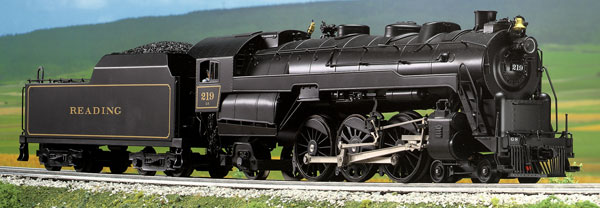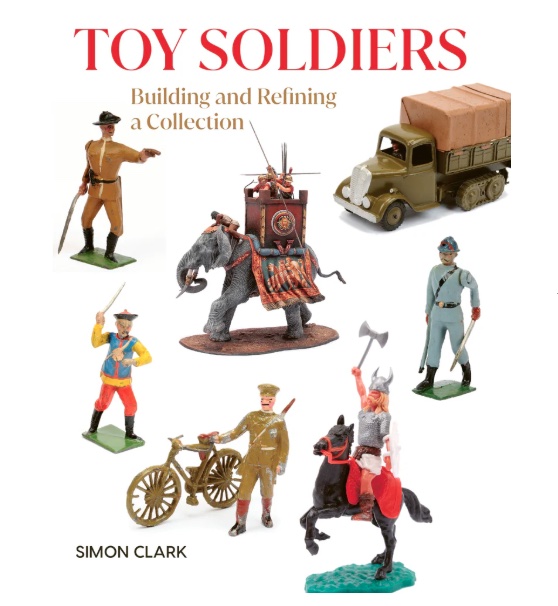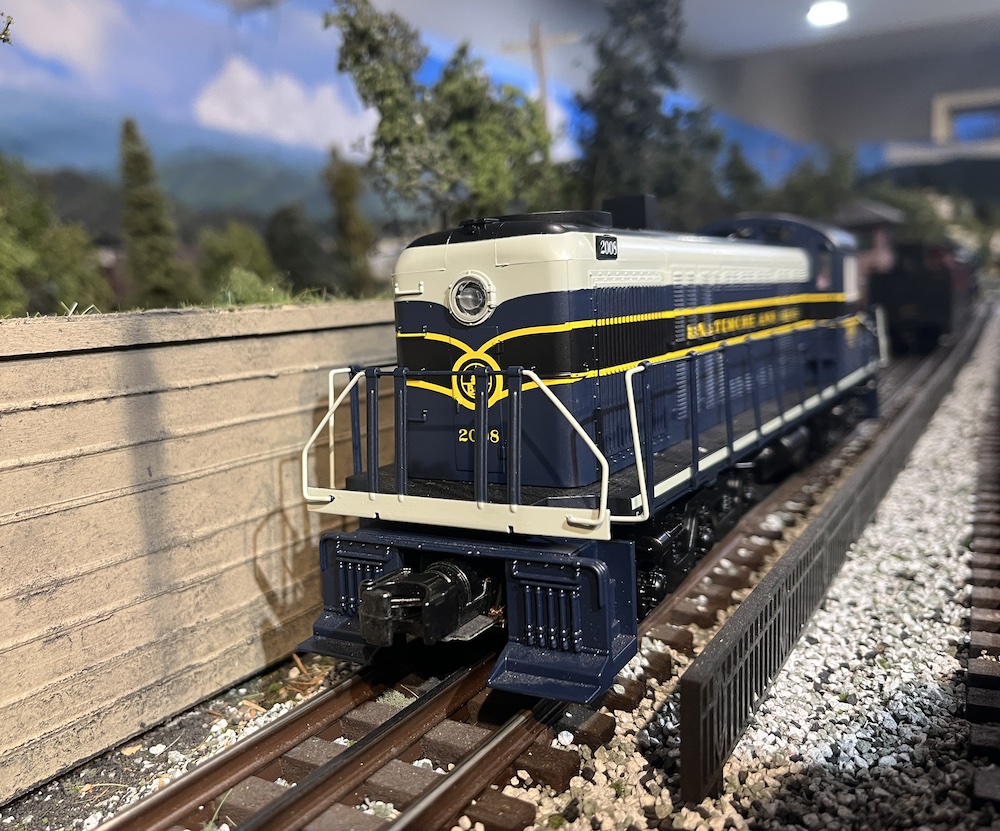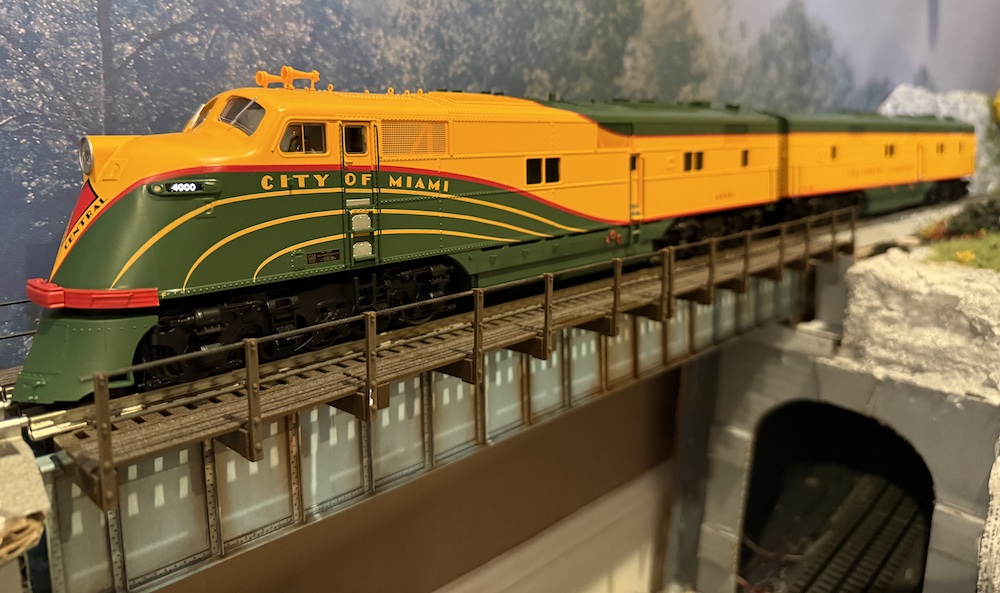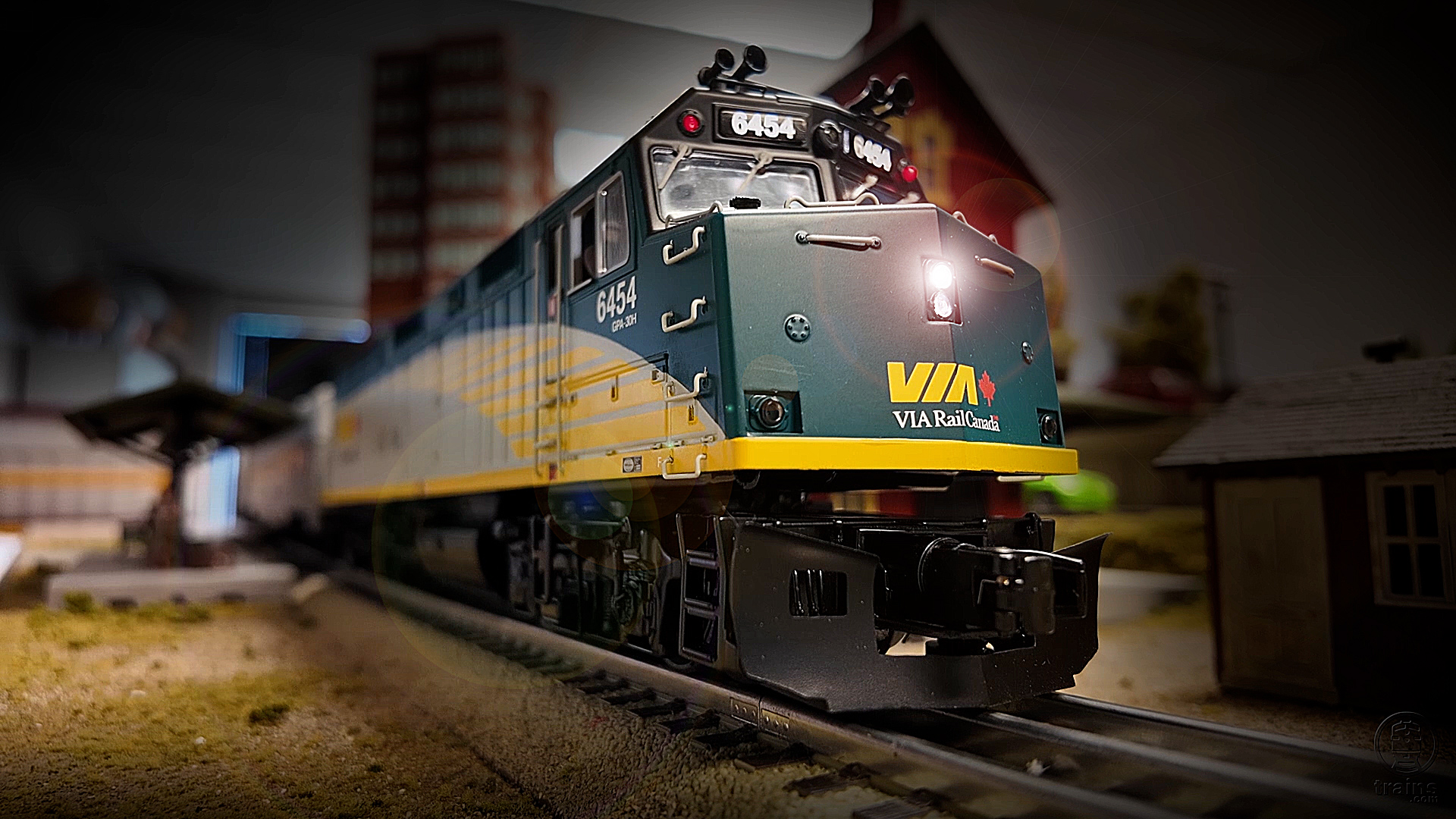In 1948, the Reading railroad committed to construction of 10 new 4-6-2 Pacifics, the G3-class. Numbered 210-219, the company erected them at the Reading Shops using Wooten boilers by Baldwin.
These locomotives could often be found at the head of three Reading streamliners: the Wall Street, the Schuylkill, and the King Coal. The service life of the G3s locomotives was short lived, since the Reading wrapped up regular steam operations in 1952. A handful of G3s locomotives were leased to the Pennsylvania-Reading Seashore Line through 1955. The last G3s steamers were scrapped in 1957.
The model
SGL Lines Electric Trains has created quite an attractive model.
Starting out front, the whole pilot assembly is beautiful. Even each strut of the “cow catcher” has its own rivet head. There are a dummy scale coupler and uncoupler arm, two flag staffs, and two air brake hoses with their connectors painted red. Snug behind a shield are two compressors, and there are grab irons along the steps on either side of the smokebox.
The locomotive’s face has a headlight riding high with a bell above it. A number board is square in the middle of the smokebox door. The walks on either side of the boiler show a very fine tread texture.
The area around the steam chest is closed, suggesting a functional assembly. On many models I’ve seen there are a lot of open gaps.
The brass boiler has cast-in boiler bands and, where appropriate, other details such as a turbine, pop-off valves, and a whistle. There is some neat add-on piping along the bottom side of the boiler, and the reverse lever is especially notable. The array of drain pipes beneath the cab are commendable as well.
The smokestack has some additional supports that had me wondering “What the heck … ?”
But after reviewing photos of G3s locomotives in Kalmbach files, as well as Bert Pennypacker’s article, “Recalling Those Classy Reading Pacifics” (Mainline Modeler, Sept., 1983), son-of-a-gun, those supports are spot on.
The cab has two interesting sources of illumination. A small bulb on the backhead and another bulb at the rear of the cab roof, giving a little help to any fireman working at night!
The cab also has a ton of gauges and pipes as well as firebox glow. And – stop the presses – there is actually a free-standing brake stand with brake lever and a genuine O scale throttle!
The tender features grab irons, a rear ladder and backup light, and a coal load made of individual pieces.
The G3s fell short in only one small measure. While the latest high-end steamers from other manufacturers feature tender water hatches that hinge open and cab-roof hatches that slide forward, the SGL Line’s locomotive has neither.
The drawbar between the locomotive and tender has two positions. With the drawbar connected in the first position, the locomotive and tender measure 22 inches (88 feet in O scale) from the pilot to the rear of the tender. Add another 3/4 of an inch for the oversize O gauge coupler.
The rig is sold in nos. 210 and 219 and is available with after-market command and sound systems for an additional charge.
The Reading blimps
Nope, it’s not the name of a semi-pro hockey team. The so-called “Blimps,” or “Turtlebacks” were actually rebuilt coaches that the Reading used on the Wall Street, the Schuylkill, and the King Coal trains. They were used from 1948 until 1981, their last years working on SEPTA transit lines.
The passenger cars are just under 171/2 inches long (approximately 68 feet in O scale), or 181/2 inches long (74 feet in O scale) coupler to coupler, perhaps a better measurement since the cars come with doorway diaphragms. The cars require O-72 track and we won’t quibble about it!
The cars are available in five-car sets (King Coal comes with blue seats, the Schuylkill with red seats) for $1,199.95 and add-on two car sets with blue or red seats cost $479.95 each. Single cars for the Wall Street are available only for two-rail operation at $240 each.
The attractive cars wear a dark green/light green paint job, accented by beige “window blinds” on the inside of the windows. The delicate paint job accents the rivets and detail on the car flanks. Also, rivet lines gently arc across the rooftops of each car.
As mentioned, the interior seats are red or blue, depending upon which train set you buy, and at the appropriate end you’ll find a row of seats facing one another. Side doors all open and the end doorways feature rigid, brass safety gates.
Undercarriage detail is a bit sparse – but I did like the air conditioning unit, with its radiator and caps for fuel and water tanks.
The trucks are beautiful and the side frames feature brake components that are separate, not simply cast into the frame. Each truck set has a pickup roller. The cars have die-cast metal knuckle couplers with traditional thumbtack uncouplers.
On the test track
Our test locomotive recorded a low-speed average of 10.8 scale mph. I had the impression that the locomotive might go a little slower with a few more hours on the clock. Its high-speed average at 18 volts was 83.4 scale mph.
Drawbar pull for the 7 pound, 11 ounce brass locomotive was a very respectable 2 pounds, 9 ounces.
The locomotive and tender both sport two pickup rollers each and the locomotive uses a Pittman can-style motor. The drive mechanism isn’t free-rolling, so changing direction on the fly or even slowing down abruptly can lead to a blunt stop and a call for the wrecking crew. Try shutting off the throttle too quickly and you’ll laugh out loud because the locomotive’s sound system plays the tummy grinding noise of couplers colliding, things breaking, and someone saying “ouch.”
Speaking of sound systems, in an era when the battle seems to be between Lionel’s RailSounds and MTH’s ProtoSound 2.0, the G3 is equipped with a QSI sound system. The QS-3000 system is very satisfactory, though it is a notch below RailSounds or ProtoSound. But that is okay. I don’t remember seeing it written anywhere that all steam sound packages have to fall into the Lionel or MTH camps.
Of note is that this engine is about as ready as you can get for installation of an after marker command-control system. Even the tender has a run/program switch already installed.
It is hard to believe that this locomotive and passenger car set came from a guy (Glenn Buckner), who, as he says, “Just runs a construction company.” This rig is clearly a labor of love, and you can see it in every detail. I imagine Glenn’s Korean contractors probably tried to get him to cut corners or make certain details a wee bit more cheaply, but he held the line. Way to go, Glenn!





